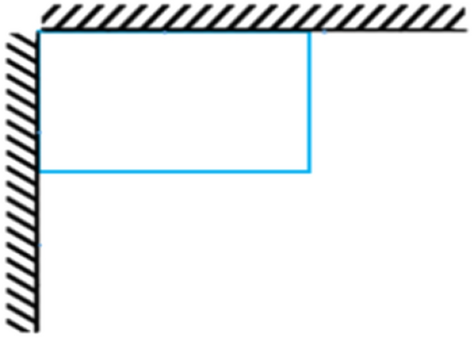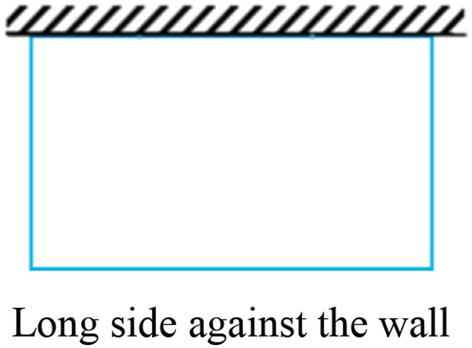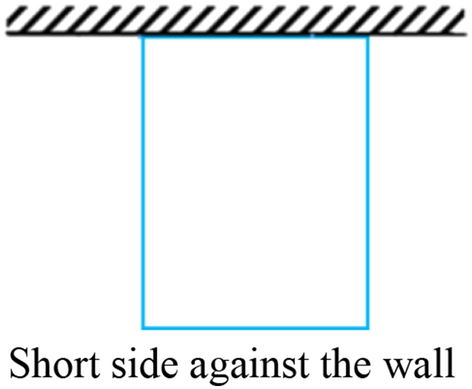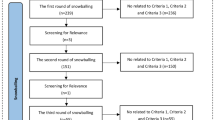Abstract
Existing computational thinking (CT) research focuses on programming in K-12 education; however, there are challenges in introducing it into the formal disciplines. Therefore, we propose the introduction of non-programming plugged learning in mathematics to develop students’ CT. The research and teaching teams collaborated to develop an instructional design for primary school students. The participants were 112 third- and fourth-grade students (aged 9–10) who took part in three rounds of experiments. In this paper, we present an iterative problem-solving process in design-based implementation research, focusing on the implementation issues that lead to the design principles in the mathematics classroom. The computational tasks, environment, tools, and practices were iteratively improved over three rounds to incorporate CT effectively into mathematics. Results from the CT questionnaire demonstrated that the new program could significantly improve students’ CT abilities and compound thinking. The results of the post-test revealed that CT, including the sub-dimensions of decomposition, algorithmic thinking, and problem-solving improved threefold compared to the pre-test between the three rounds, indicating that strengthened CT design enhanced CT perceptions. Similarly, the students’ and teacher’ interviews confirmed their positive experiences with CT. Based on empirical research, we summarize design characteristics from computational tasks, computational environment and tools, and computational practices and propose design principles. We demonstrate the potential of non-programming plugged learning for developing primary school students’ CT in mathematics.









Similar content being viewed by others
References
Akker, J. (1999). Principles and methods of development research. In J. van den Akker, R. M. Branch, K. Gustafson, N. Nieveen, & T. Plomp (Eds.), Design approaches and tools in education and training (pp. 1–14). Springer.
Allsop, Y. (2019). Assessing computational thinking process using a multiple evaluation approach. International Journal of Child-CompuTer Interaction, 19, 30–55. https://doi.org/10.1016/j.ijcci.2018.10.004
Arroyo, I., Micciollo, M., Casano, J., Ottmar, E., Hulse, T., & Rodrigo, M. M. (2017). Wearable learning: Multiplayer embodied games for math. Proceedings of the Annual Symposium on Computer-Human Interaction in Play. https://doi.org/10.1145/3116595.3116637
Atmatzidou, S., & Demetriadis, S. (2016). Advancing students’ computational thinking skills through educational robotics: A study on age and gender relevant differences. Robotics and Autonomous Systems, 75, 661–670. https://doi.org/10.1016/j.robot.2015.10.008
Baker, C. K., & Galanti, T. M. (2017). Integrating STEM in elementary classrooms using model-eliciting activities: Responsive professional development for mathematics coaches and teachers. International Journal of STEM Education, 4(1), 10. https://doi.org/10.1186/s40594-017-0066-3
Barab, S., & Squire, K. (2004). Design-based research: Putting a stake in the ground. Journal of the Learning Sciences, 13(1), 1–14. https://doi.org/10.1207/s15327809jls1301_1
Barcelos, T. S., Munoz, R., Villarroel, R., Merino, E., & Silveira, I. F. (2018). Mathematics learning through computational thinking activities: A systematic literature review. Journal of Universal Computer Science, 24(7), 815–845.
Barcelos, T. S., & Silveira, I. F. (2012). Teaching computational thinking in initial series An analysis of the confluence among mathematics and computer sciences in elementary education and its implications for higher education. XXXVIII Conferencia Latinoamericana En Informatica (CLEI), 2012, 1–8. https://doi.org/10.1109/CLEI.2012.6427135
Barr, V., & Stephenson, C. (2011). Bringing computational thinking to K-12: What is involved and what is the role of the computer science education community? ACM Inroads, 2(1), 48–54. https://doi.org/10.1145/1929887.1929905
Bers, M. U., Flannery, L., Kazakoff, E. R., & Sullivan, A. (2014). Computational thinking and tinkering: Exploration of an early childhood robotics curriculum. Computers & Education, 72, 145–157. https://doi.org/10.1016/j.compedu.2013.10.020
Boaler, J., & Selling, S. K. (2017). Psychological imprisonment or intellectual freedom? A longitudinal study of contrasting school mathematics approaches and their impact on adults’ lives. Journal for Research in Mathematics Education, 48(1), 78–105. https://doi.org/10.5951/jresematheduc.48.1.0078
Boyce, A. K., Campbell, A., Pickford, S., Culler, D., & Barnes, T. (2011). Experimental evaluation of BeadLoom game: How adding game elements to an educational tool improves motivation and learning. In Proceedings of the 16th Annual Joint Conference on Innovation and Technology in Computer Science Education, (pp. 243–247). https://doi.org/10.1145/1999747.1999816
Brennan, K., & Resnick, M. (2012). New frameworks for studying and assessing the development of computational thinking. In Proceedings of the 2012 Annual Meeting of the American Educational Research Association.
Chiu, T. K. F., & Churchill, D. (2015). Exploring the characteristics of an optimal design of digital materials for concept learning in mathematics: Multimedia learning and variation theory. Computers & Education, 82, 280–291. https://doi.org/10.1016/j.compedu.2014.12.001
Chou, P. N. (2020). Using ScratchJr to foster young children’s computational thinking competence: A case study in a third-grade computer class. Journal of Educational Computing Research, 58(3), 570–595. https://doi.org/10.1177/0735633119872908
Collins, A., Joseph, D., & Bielaczyc, K. (2004). Design research: Theoretical and methodological issues. Journal of the Learning Sciences, 13(1), 15–42. https://doi.org/10.1207/s15327809jls1301_2
Costa, E. J. F., Campos, L. M. R. S., & Guerrero, D. S. (2017). Computational thinking in mathematics education: A joint approach to encourage problem-solving ability. IEEE Frontiers in Education Conference (FIE), 2017, 1–8. https://doi.org/10.1109/FIE.2017.8190655
Csikszentmihalyi, M., & Larson, R. (2014). Validity and reliability of the experience-sampling method. In Flow and the Foundations of Positive Psychology: The Collected Works of Mihaly Csikszentmihalyi (pp. 35–54). Springer Netherlands.
Dukeman, A., Caglar, F., Shekhar, S., Kinnebrew, J., Biswas, G., Fisher, D., & Gokhale, A. (2013). Teaching computational thinking skills in C3STEM with traffic simulation. Human-Computer Interaction and Knowledge Discovery in Complex, Unstructured, Big Data. https://doi.org/10.1007/978-3-642-39146-0_33
Durak, H. Y., & Saritepeci, M. (2018). Analysis of the relation between computational thinking skills and various variables with the structural equation model. Computers & Education, 116, 191–202. https://doi.org/10.1016/j.compedu.2017.09.004
Ehmke, T., van den Ham, A.-K., Sälzer, C., Heine, J., & Prenzel, M. (2020). Measuring mathematics competence in international and national large scale assessments: Linking PISA and the national educational panel study in Germany. Studies in Educational Evaluation, 65, 100847. https://doi.org/10.1016/j.stueduc.2020.100847
Fishman, B. J., Penuel, W. R., Allen, A. R., Cheng, B. H., & Sabelli, N. (2013). Design-based implementation research: An emerging model for transforming the relationship of research and practice. National Society for the Study of Education, 112(2), 136–156. https://doi.org/10.1177/016146811311501415
Gadanidis, G., Clements, E., & Yiu, C. (2018). Group theory, computational thinking, and young mathematicians. Mathematical Thinking and Learning, 20(1), 32–53. https://doi.org/10.1080/10986065.2018.1403542
Graham, K., Cuoco, A., & Zimmerman, G. (2010). Focus in high school mathematics: Reasoning and sense making in Algebra. National Council of Teachers of Mathematics.
Grover, S., Jackiw, N., & Lundh, P. (2019). Concepts before coding: Non-programming interactives to advance learning of introductory programming concepts in middle school. Computer Science Education, 29(2–3), 106–135. https://doi.org/10.1080/08993408.2019.1568955
Grover, S., & Pea, R. (2013). Computational thinking in K–12: A review of the state of the field. Educational Researcher, 42(1), 38–43. https://doi.org/10.3102/0013189X12463051
Hickmott, D., Prieto-Rodriguez, E., & Holmes, K. (2018). A Scoping review of studies on computational thinking in K–12 mathematics classrooms. Digital Experiences in Mathematics Education, 4(1), 48–69. https://doi.org/10.1007/s40751-017-0038-8
Hooshyar, D., Malva, L., Yang, Y., Pedaste, M., Wang, M., & Lim, H. (2021). An adaptive educational computer game: Effects on students’ knowledge and learning attitude in computational thinking. Computers in Human Behavior, 114, 106575. https://doi.org/10.1016/j.chb.2020.106575
Hung, C. Y., Lin, Y. R., Huang, K. Y., Yu, P. T., & Sun, J. C. Y. (2017). Collaborative game-based learning with motion-sensing technology: Analyzing students’ motivation, attention, and relaxation levels. International Journal of Online Pedagogy and Course Design, 7(4), 53–64. https://doi.org/10.4018/IJOPCD.2017100104
ISTE computational thinking competencies. (2018). Retrieved January 1, 2022, from https://www.iste.org/standards/iste-standards-for-computational-thinking
Karim, M. E., Lemaignan, S., & Mondada, F. (2015). A review: Can robots reshape K-12 STEM education? IEEE International Workshop on Advanced Robotics and Its Social Impacts (ARSO), 2015, 1–8. https://doi.org/10.1109/ARSO.2015.7428217
Kazimoglu, C., Kiernan, M., Bacon, L., & Mackinnon, L. (2012). A serious game for developing computational thinking and learning introductory computer programming. Procedia - Social and Behavioral Sciences, 47, 1991–1999. https://doi.org/10.1016/j.sbspro.2012.06.938
Ke, F. (2014). An implementation of design-based learning through creating educational computer games: A case study on mathematics learning during design and computing. Computers & Education, 73, 26–39. https://doi.org/10.1016/j.compedu.2013.12.010
Kong, S. C. (2008). The development of a cognitive tool for teaching and learning fractions in the mathematics classroom: A design-based study. Computers & Education, 51(2), 886–899. https://doi.org/10.1016/j.compedu.2007.09.007
Kong, S. C. (2016). A framework of curriculum design for computational thinking development in K-12 education. Journal of Computers in Education, 3(4), 377–394. https://doi.org/10.1007/s40692-016-0076-z
Kordaki, M., & Kakavas, P. (2017). Digital storytelling as an effective framework for the development of computational thinking skills. In Edulearn17 Proceedings, (pp. 6325–6335).
Korkmaz, Ö., Çakir, R., & Özden, M. Y. (2017). A validity and reliability study of the computational thinking scales (CTS). Computers in Human Behavior, 72, 558–569. https://doi.org/10.1016/j.chb.2017.01.005
Kotsopoulos, D., Floyd, L., Khan, S., Namukasa, I. K., Somanath, S., Weber, J., & Yiu, C. (2017). A pedagogical framework for computational thinking. Digital Experiences in Mathematics Education, 3(2), 154–171. https://doi.org/10.1007/s40751-017-0031-2
Lockwood, E., DeJarnette, A. F., Asay, A., & Thomas, M. (2016). Algorithmic Thinking: An initial characterization of computational thinking in mathematics. In North American Chapter of the International Group for the Psychology of Mathematics Education. North American Chapter of the International Group for the Psychology of Mathematics Education. Retrieved from https://eric.ed.gov/?id=ED583797
Lye, S. Y., & Koh, J. H. L. (2014). Review on teaching and learning of computational thinking through programming: What is next for K-12? Computers in Human Behavior, 41, 51–61. https://doi.org/10.1016/j.chb.2014.09.012
National Research Council. (2013). The mathematical sciences in 2025. National Academies Press.
Ouyang, Y., Hayden, K. L., & Remold, J. (2018). Introducing computational thinking through non-programming science activities. Proceedings of the 49th ACM Technical Symposium on Computer Science Education, (pp. 308–313). https://doi.org/10.1145/3159450.3159520
Papert, S. (1980). Mindstorms: Children, computers, and powerful ideas. Basic Books.
Parrish, P. E. (2004). The trouble with learning objects. Educational Technology Research and Development, 52(1), 49–67. https://doi.org/10.1007/BF02504772
Pérez, A. (2018). A framework for computational thinking dispositions in mathematics education. Journal for Research in Mathematics Education, 49(4), 424–461. https://doi.org/10.5951/jresematheduc.49.4.0424
Piaget, J. (1964). Part I: Cognitive development in children: Piaget development and learning. Journal of Research in Science Teaching, 2, 176–186. https://doi.org/10.1002/tea.3660020306
PISA 2022: Mathematics Framework. (2022). Retrieved January 1, 2022 from https://pisa2022-maths.oecd.org/#Overview
Plomp, T. (2013). Educational design research: A introduction. In Educational Design Research, (pp. 10–51).
Rich, K. M., Yadav, A., & Larimore, R. A. (2020). Teacher implementation profiles for integrating computational thinking into elementary mathematics and science instruction. Education and Information Technologies, 25(4), 3161–3188. https://doi.org/10.1007/s10639-020-10115-5
Rosch, J. L., & Vogel-Walcutt, J. J. (2013). A review of eye-tracking applications as tools for training. Cognition, Technology & Work, 15(3), 313–327. https://doi.org/10.1007/s10111-012-0234-7
Roschelle, J., & Shechtman, N. (2013). SimCalc at scale: Three studies examine the integration of technology, curriculum, and professional development for advancing middle school mathematics. In S. J. Hegedus & J. Roschelle (Eds.), The SimCalc Vision and Contributions: Democratizing Access to Important Mathematics (pp. 125–143). Springer Netherlands. https://doi.org/10.1007/978-94-007-5696-0_8
Sáez-López, J. M., Sevillano-García, M. L., & Vazquez-Cano, E. (2019). The effect of programming on primary school students’ mathematical and scientific understanding: Educational use of mBot. Educational Technology Research and Development, 67(6), 1405–1425. https://doi.org/10.1007/s11423-019-09648-5
Sengupta, P., Kinnebrew, J. S., Basu, S., Biswas, G., & Clark, D. (2013). Integrating computational thinking with K-12 science education using agent-based computation: A theoretical framework. Education and Information Technologies, 18(2), 351–380. https://doi.org/10.1007/s10639-012-9240-x
Shute, V. J., Sun, C., & Asbell-Clarke, J. (2017). Demystifying computational thinking. Educational Research Review, 22, 142–158. https://doi.org/10.1016/j.edurev.2017.09.003
Sung, W., Ahn, J., & Black, J. B. (2017). Introducing computational thinking to young learners: Practicing computational perspectives through embodiment in mathematics education. Technology, Knowledge and Learning, 22(3), 443–463. https://doi.org/10.1007/s10758-017-9328-x
Tang, X., Yin, Y., Lin, Q., Hadad, R., & Zhai, X. (2020). Assessing computational thinking: A systematic review of empirical studies. Computers & Education, 148, 103798. https://doi.org/10.1016/j.compedu.2019.103798
Tsarava, K., Moeller, K., Pinkwart, N., Butz, M., Trautwein, U., & Ninaus, M. (2017, October). Training computational thinking: Game-based unplugged and plugged-in activities in primary school. In 11th European Conference on Game-Based Learning, pp. 687–695.
Vivian, R., Falkner, K., & Falkner, N. (2014). Addressing the challenges of a new digital technologies curriculum: MOOCs as a scalable solution for teacher professional development. Research in Learning Technology. https://doi.org/10.3402/rlt.v22.24691
Wang, F., & Hannafin, M. J. (2005). Design-based research and technology-enhanced learning environments. Educational Technology Research and Development, 53(4), 5–23. https://doi.org/10.1007/BF02504682
Wang, Q., Quek, C. L., & Hu, X. (2017). Designing and improving a blended synchronous learning environment: An educational design research. The International Review of Research in Open and Distributed Learning. https://doi.org/10.19173/irrodl.v18i3.3034
Weintrop, D., Beheshti, E., Horn, M., Orton, K., Jona, K., Trouille, L., & Wilensky, U. (2016). Defining computational thinking for mathematics and science classrooms. Journal of Science Education and Technology, 25(1), 127–147. https://doi.org/10.1007/s10956-015-9581-5
Wing, J. M. (2006). Computational thinking. Communications of the ACM, 49(3), 33–35. https://doi.org/10.1145/1118178.1118215
Wu, X., Wu, R., Chang, H.-H., Kong, Q., & Zhang, Y. (2020). International comparative study on PISA mathematics achievement test based on cognitive diagnostic models. Frontiers in Psychology, 11, 2230. https://doi.org/10.3389/fpsyg.2020.02230
Zhang, L., & Nouri, J. (2019). A systematic review of learning computational thinking through Scratch in K-9. Computers & Education, 141, 103607. https://doi.org/10.1016/j.compedu.2019.103607
Zhao, W., & Shute, V. J. (2019). Can playing a video game foster computational thinking skills? Computers & Education, 141, 103633. https://doi.org/10.1016/j.compedu.2019.103633
Acknowledgements
The authors would like to thank Ling Xie who conducted instructional design and implementation, the mathematics teacher team for their participation in classroom observation and seminars in a primary school attached to Huazhong University of science and technology, Wuhan, China, and thank Xing Li, Dandan Wang, and Niu Li for their assistance with experiments.
Funding
This study was funded by a grant (Grant Number: 71874066) from the National Natural Science Foundation of China and a grant (Grant Number: 21YJC880026) from the Philosophy and Social Sciences Planning Project of the Ministry of Education, China.
Author information
Authors and Affiliations
Corresponding authors
Ethics declarations
Conflict of interest
No potential conflict of interest was reported by the authors.
Ethical approval
All study participants’ parents provided informed consent, and the study design was approved by the appropriate ethics review board.
Additional information
Publisher's Note
Springer Nature remains neutral with regard to jurisdictional claims in published maps and institutional affiliations.
Appendices
Appendix 1
Appendix 2
Transfer exercises
-
1.
Use 20 fence sections, each measuring 1 m to enclose a rectangular field for planting potatoes. How do you enclose the largest area? Answer: The area of the square is the largest; side length: 20÷4=5(m); area: 5×5=25(m2).
-
2.
Use 12 fence sections, each measuring 1 m to enclose a rectangular bale of straw with two adjacent sides against the wall. How do you enclose the largest area?

Answer: The area of the square is the largest; length + width = 12(m); length=6(m); width=6(m); area: 6×6=36 (m2)
-
3.
Use 16 fence sections, each measuring 1 m to enclose a rectangular chicken coop with one side against the wall. How do you enclose the largest area?


Answer:
-
(1)
Long side against the wall: length+2×width=16
Length (m)
Width (m)
Area (square meters)
14
1
14
12
2
24
10
3
30
8
4
32
6
5
30
-
(2)
Short side against the wall: width+2×length=16
Length (m)
Width (m)
Area (square meters)
7
2
14
6
4
24
Rights and permissions
About this article
Cite this article
Wang, J., Zhang, Y., Hung, CY. et al. Exploring the characteristics of an optimal design of non-programming plugged learning for developing primary school students’ computational thinking in mathematics. Education Tech Research Dev 70, 849–880 (2022). https://doi.org/10.1007/s11423-022-10093-0
Accepted:
Published:
Issue Date:
DOI: https://doi.org/10.1007/s11423-022-10093-0







